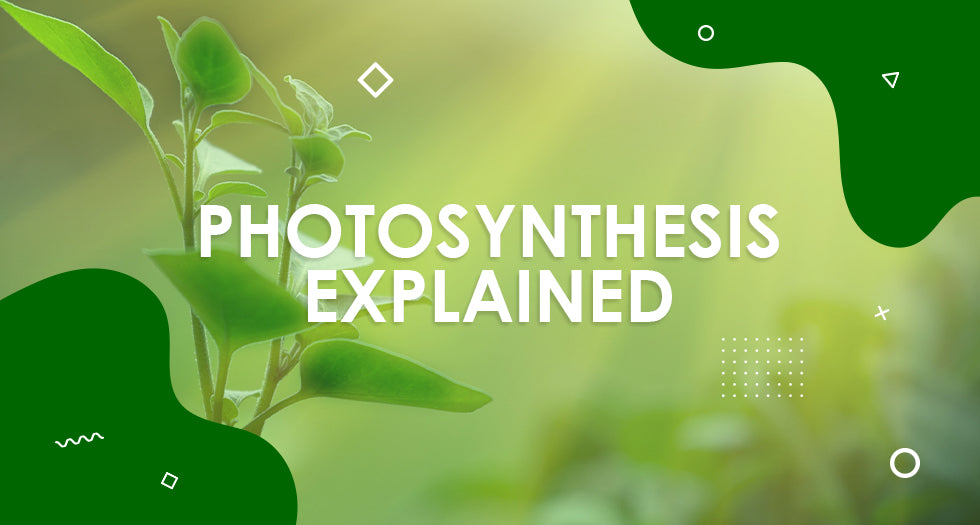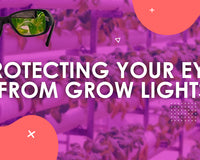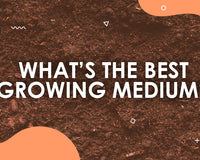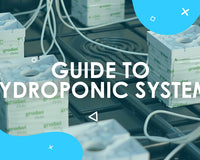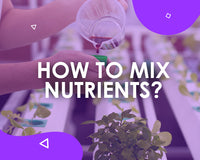Introduction
Life on Earth is dependant on the organic molecules that are produced by photosynthesis. A staggering 70% of the world's Oxygen comes from the ocean thanks to phytoplankton photosynthesis. The remainder of the world's oxygen is produced by plants, and comes predominantly from the Rainforest.
Photosynthesis happens in two ways: Light-Independent and Light-Dependant. The factors which affect this process include light, water, and Co2.
In the text below, you'll learn why plants need light, how it affects their development, and what light is best for optimal growth rates.
What is Photosynthesis?
Photosynthesis is the process in which plants and other organisms like algae use light energy to convert water and carbon dioxide into glucose. It’s an endothermic reaction which generates the energy and food for plant’s respiration and development. To perform photosynthesis, plants require the presence of light, carbon dioxide, and water, as shown in the below equation.
6CO2 + 6H20 + (sunlight) → C6H12O6 + 6O2
Carbon Dioxide + Water + energy from light -> Glucose and Oxygen
Photosynthesis Explained
Plants absorb light through a green pigment in the leaves, named chlorophyll. Chlorophyll is contained by chloroplasts in the plant’s cells, namely mesophyll cells and palisade. Leaves are the plants’ principle photosynthetic organ. Plants absorb carbon dioxide from the air through the stomata and water from the soil through roots. Water is transported from the roots to the xylem vessels in the plant’s stem and spread to the leaves.

The cellular components required for Photosynthesis comprise of pigments, plastids, antennae, and reaction centres. Plants have a variety of pigments that are absorbed in different light wavelengths. The three principle groups are chlorophylls, carotenoids and phycobilin. Chlorophylls are green pigments, which trap red and blue light. Carotenoids are yellow, orange, and red pigments, which absorb green-bluish light. Phycobilin are blue and red pigments, which absorb other light wavelengths different from what chlorophylls and carotenoids absorb.
Plastids store nutrtients and contain pigments. Plastids are found in the cytoplasm. While colourless leucoplasts store starch and fats, chromoplasts comprise chloroplasts and carotenoids. The Photosynthetic process happens in the chloroplasts, namely the stroma and grana regions.
A collection of up to 5,000 pigment molecules forms antennae. These are structures which capture light energy as photons. Light energy is transferred to chlorophyll pigments, which are then converted into chemical energy. Further to this, the proteins and pigments, which turn light energy to chemical energy constitute the reaction centre.
Light-Dependent and Light-Independent Reactions
Photosynthesis is comprised of two main stages. These are light-dependent reactions and light-independent reactions, respectively the Calvin Cycle. Both reactions happen within the chloroplasts.
Light-dependent reactions occur when a photon hits the plant’s reaction centre. When this happens, the chlorophyll pigment releases an electron that travels through a transport chain generating the energy required for adenosine triphosphate (ATP – a source energy for plants’ cells) and NADPH (nicotinamide adenine dinucleotide phosphate hydrogen). The hole produced in the initial chlorophyll pigment is filled by an electron from water, releasing Oxygen.
The Calvin cycle is the second stage of Photosynthesis which uses CO2 to produce glucose. The reactions during this stage don’t require light energy. Because the Calvin cycle only adds one Co2 molecule at a time, it repeats to achieve the 6-Carbon structure of glucose molecules. And the NADPH generated during the light-dependent phase of PS fuels the Calvin cycle.

Airbomz Co2 Can
|

Exhale CO2 Bag
|

Smart Co2
|
Blue Light for Vegetative Growth
Blue light has wavelengths ranging between 400 and 495 nm. It has the strongest effects on plants’ development when compared with other light wavelengths. The reason for this is blue light affects the development of chlorophyll, which helps plants absorb more light energy. It also acts as a regulator for the plant’s cellular respirations and reduces water loss through evaporation. More exposure to blue light accelerates plants’ growth and maturity through photomorphogenesis.
Blue photons promote photosynthetic reactions and maintain normal plant development. They control the opening of the stomata, which regulates water and carbon dioxide levels in the plant. Growers typically use high intensity discharge grow lights such as Metal Halide (MH) bulbs or compact fluorescent lights (CFL) which contain large amounts of blue light in the vegetative stage of growing, as they also aid in preventing stem elongation, resulting in tighter, shorter internodal spaces, before switching to HPS lighting for flowering.

LUMii Solar 315W Lumii GRO Bulb
|
Red Light for Flowering and Fruiting
Longer light wavelengths, which range between 600 and 700 nm, are red in colour. Red light promotes stem development, blooming and fructification as well as encouraging chlorophyll production.
For strong flowering and fruiting, growers use Lumii Black HPS lamps, which have a high PPFD output and a lifecycle of up to 20,000 hours. An increasing number of growers however are choosing to use ‘full spectrum’ grow lights like Photon LED and the Maxibright Daylight which contain all visible wavelengths (including blue and red), and have lifespans of around 50,000 hours with a 30% lower power consumption. These lights can be used throughout veg and flower, meaning there is no need to switch lighting. Many growers opt for this route as your plants will be provided with full spectrum light as opposed to specific portions of the spectrum.

LUMii BLACK 600W Dig. Kit
|

Photon LED Board
|

Maxibright Daylight LED
|
Conclusion
Put simply, photosynthesis is the engine for plant growth. Without a proper lighting source, your plants will never reach their full potential. Plants require more blue light during the vegetative stage and more red light during the flowering and fruiting phase. Traditionally growers have switched the grow light they use when changing from vegetative growth to flowering/blooming to enable this, but with the introduction of full spectrum grow lights this is no longer the case. Here at London Grow we have tested and seen the impact of full spectrum lighting modules such as Photon LED vs traditional light fixtures such as HPS and can confidently say that they are the future of grow light technology. Plants look healthier, with tightly packed internodes. When using full spectrum lighting, we've observed that the amount yielded per watt of power used (expressed as grams/watt) increases significantly. If you want the best possible light for your grow space, choose full spectrum LEDs, or CMH (ceramic metal halide) fixtures.

SHOP NOW READ MORE

